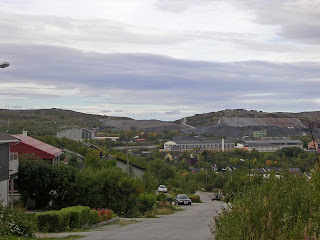 |
| Vantage group at the Norwegian - Russian border |
We got off the ship and boarded a bus
for a trip south and east to the border. We weren’t allowed to cross the border
(no fear of that, there’s a lake between us). But, it was fun to imagine being
in Russia, a country that has always fascinated me. The border crossing is at
Storskog. We could see the Norwegian border patrol, the gate across the road,
and the no man’s land before the Russian station. But, we could not see the
Russian border station.
The border with Russia was finally set
in 1826. Russia wanted a particular church, so they got a finger of land inside
Norway including the church. Norway got a larger finger of land into Russia
just north of that. If you look at a map you will see this and know why the
border isn’t a straight or even line.
The land here is fairly flat. We are in an arctic climate zone, so there are very few trees. The ones we saw were already starting to change color, so the colors were wonderful. There are lots of lakes and streams. When we got back to the city we stopped in the Prestfjellet area with a stunning overlook of the town and the fjord. Kirkenes is another city razed by the Germans, so most of the homes were the new, colorful, rectangular construction. We did see one older home which was quite unique with several turrets and lots of balconies.

No comments:
Post a Comment